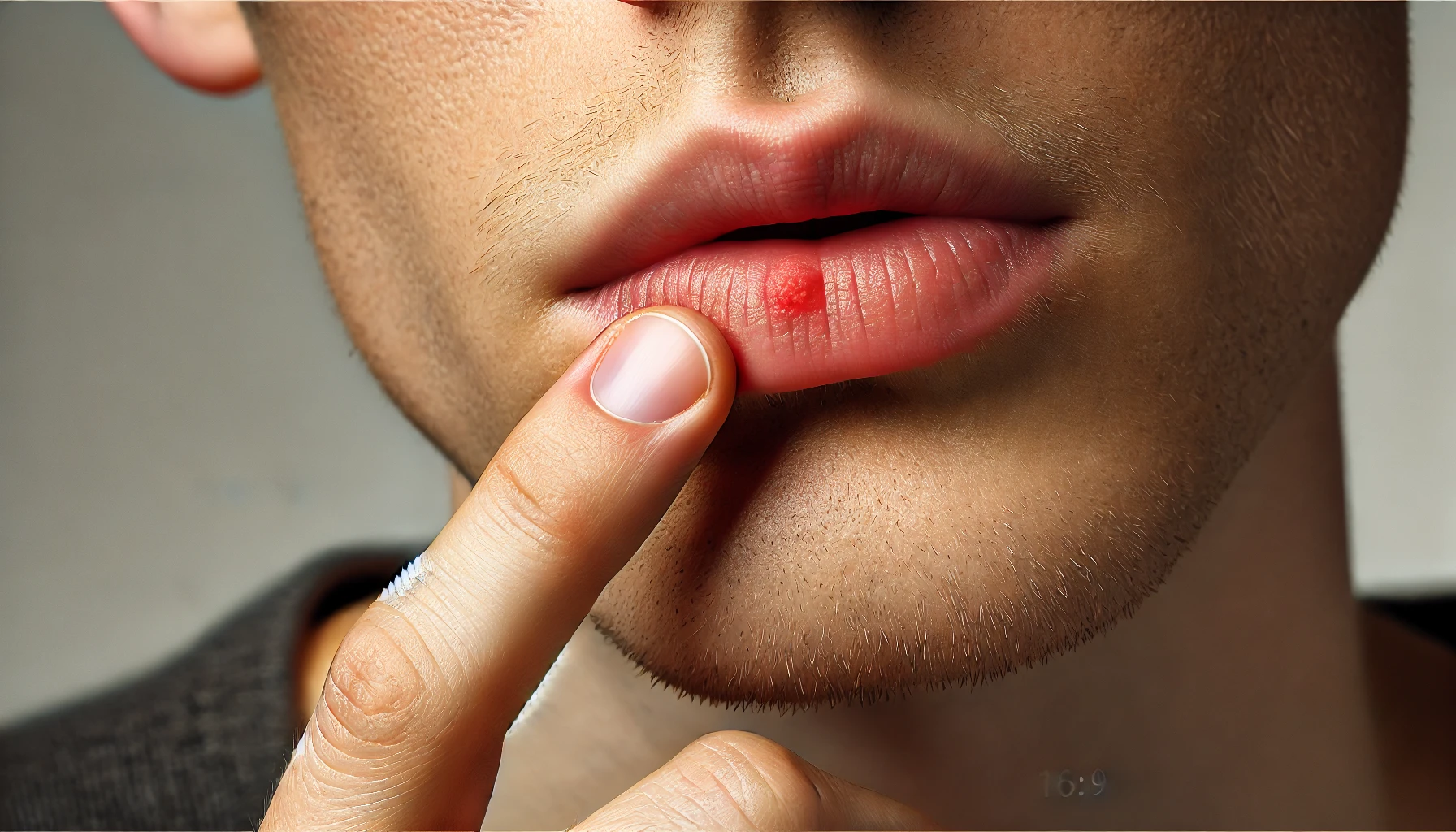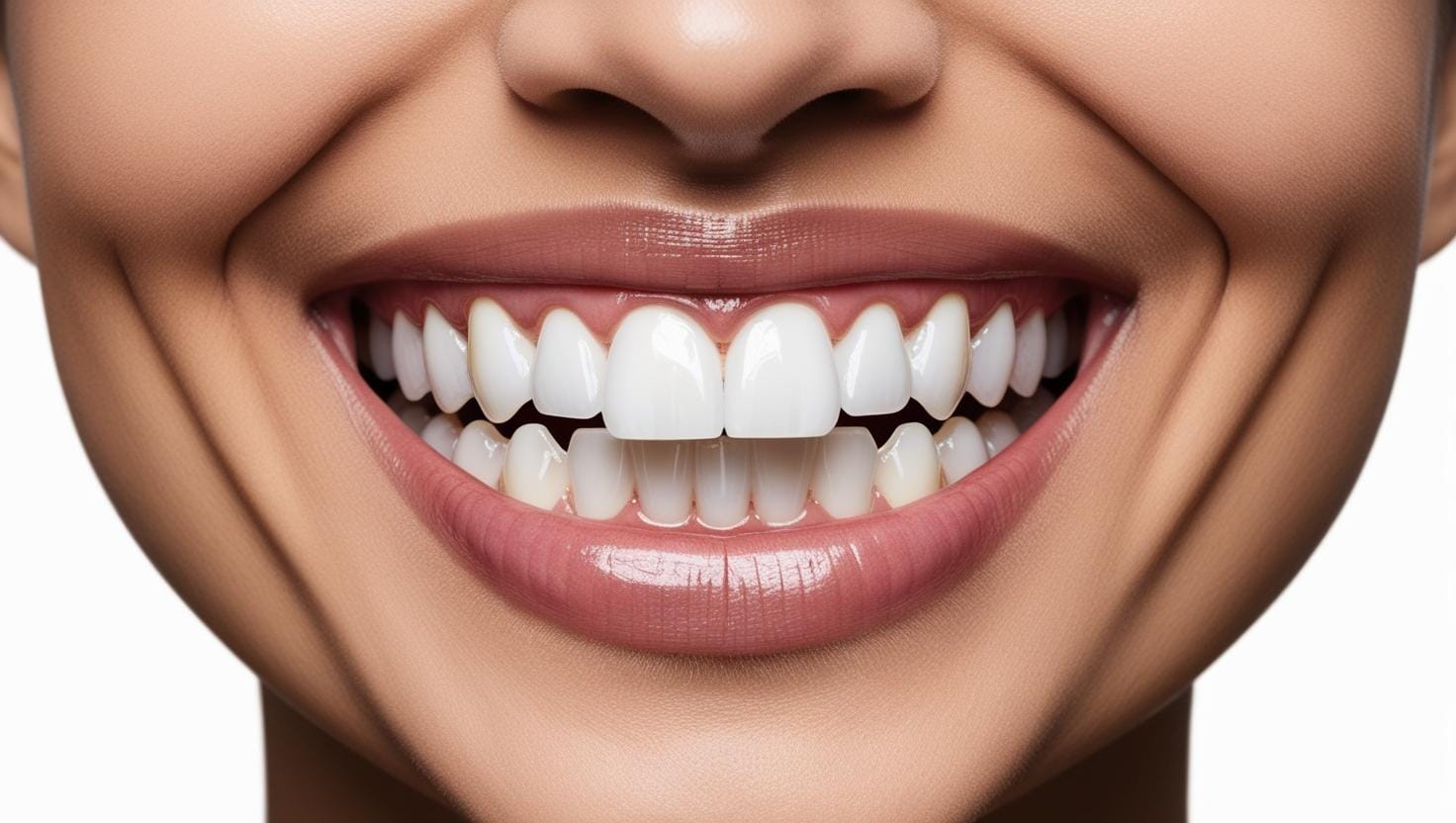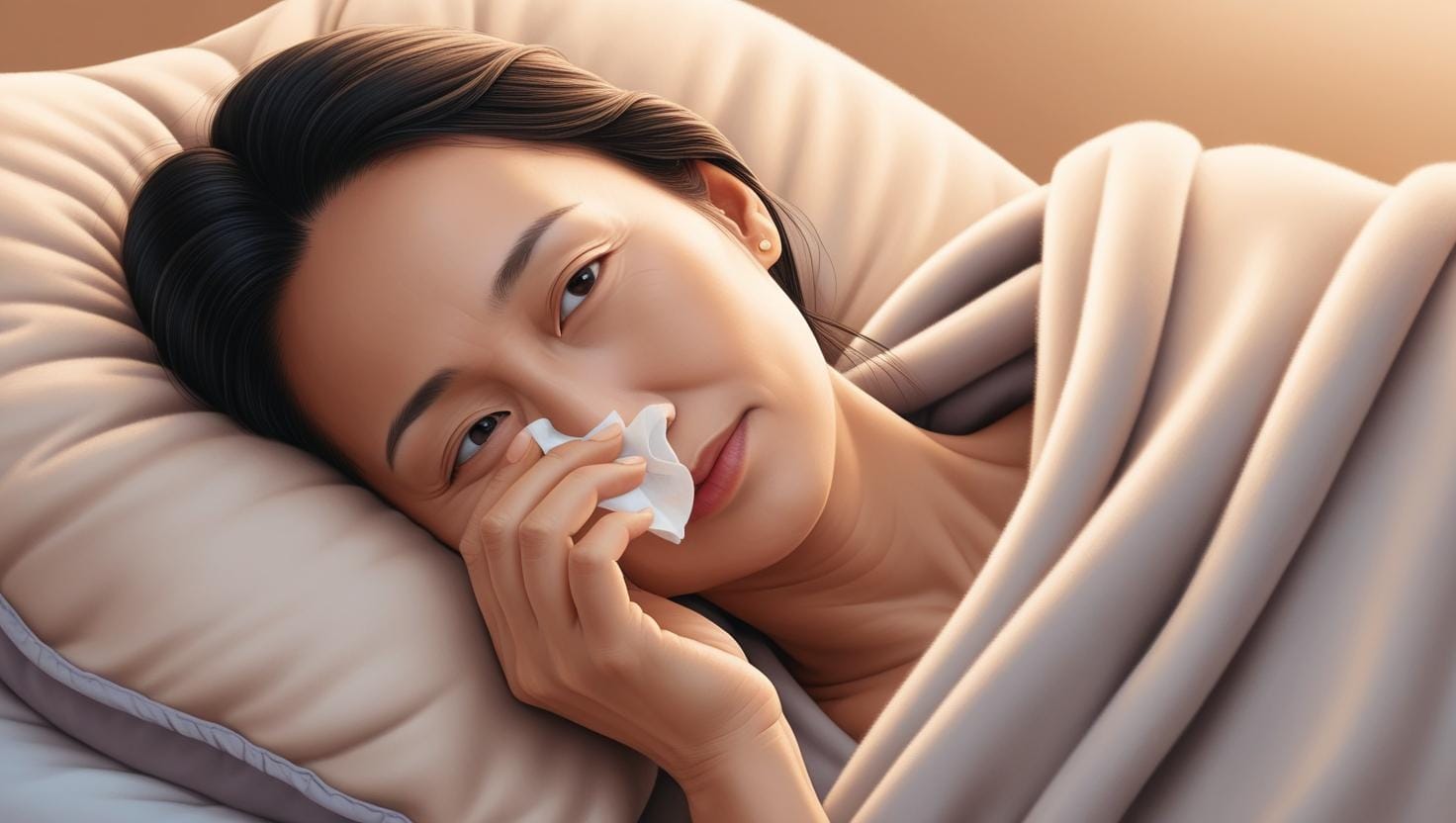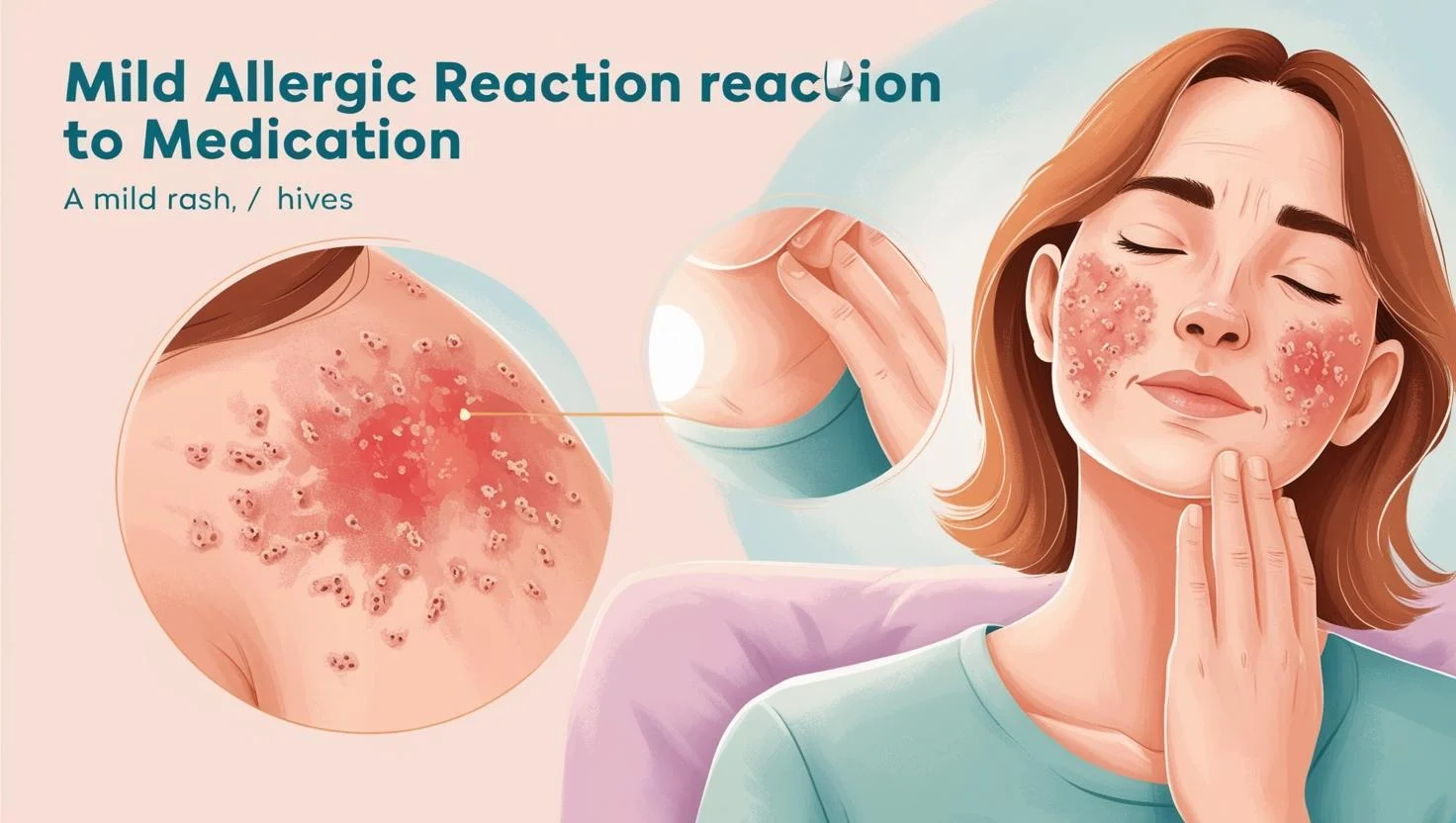What is a Mouth Sore? Symptoms of Mouth Sores
Mouth sores and canker sores are some of the most common oral health issues, affecting everyday activities like speaking, swallowing, and chewing. While minor mouth sores may heal on their own within a few days, some can become inflamed, leading to painful ulcers known as canker sores. Treatment options range from natural remedies and mouthwashes to, in some cases, antibiotics.
Investigating the underlying cause of recurring sores is critical, as they could be a sign of more serious health issues. If mouth sores are a regular problem, it is essential to consult a dentist and consider a thorough examination for potential health concerns.
What is a Mouth Sore?

A mouth sore refers to lesions in the inner cheeks, gums, tongue, the underside of the tongue, or the roof of the mouth. When these sores become inflamed and swollen, they are commonly known as canker sores. Mouth sores may result from viral infections, bacterial infections, or simply from the physical irritation caused by hard foods.
Although most are mild and heal within a few days, persistent or recurring sores should be evaluated, as they may indicate a more serious condition. Children and infants are particularly prone to mouth sores due to inadequate oral hygiene or accidental injury. Research shows that mouth sores occur more frequently in women than in men.
Symptoms of Mouth Sores
Mouth sores typically appear within 1-2 days, develop quickly, and usually heal in a few days. Common symptoms include:
- Red, inflamed areas in the mouth
- Swelling, pain, and tenderness at the sore site
- Pain and discomfort when talking or chewing
- Sensitivity while brushing teeth
- Loss of appetite
- Sore throat
- Fever
What Causes Mouth Sores?
Mouth sores may arise from stress or psychological factors, but they can also result from various other causes, including:
- Genetic and systemic conditions
- Vitamin and mineral deficiencies
- Medication side effects
- Hormonal changes
- Allergies to certain foods or drugs
- Consumption of excessively hot or cold foods
- Poor oral hygiene
- Alcoholic and acidic beverages
- Smoking
- Use of harsh chemical-containing toothpaste or mouth products
- Dental or gum structure issues
- Weakened immune system
- Bacterial and viral infections
- Consumption of hard or abrasive foods
How is a Mouth Sore Diagnosed?
Mouth sores, if they are easily visible, can often be self-diagnosed by examining the painful area in a mirror. Sores located near the roof of the mouth or back of the throat are typically identified by a dentist using specialized instruments. If a sore persists beyond a few days or causes excessive pain, bleeding, or fever, immediate dental consultation is advised.
During an examination, the dentist will assess the sore’s size and determine an appropriate treatment. In cases of infection, a culture sample from the mouth may be analyzed to identify the microorganism, enabling targeted antibiotic or antiviral therapy.
Remedies for Mouth Sores and Treatment
For minor sores that don't significantly disrupt daily life, simple home remedies and mouthwashes can often speed up recovery. However, larger sores may require professional care, especially in children where they may cause appetite loss, impacting growth and development. Here are some home remedies for mouth sores:
- Baking Soda: Baking soda’s antibacterial properties can help heal mouth sores. Mix a teaspoon of baking soda with a small amount of water, and gargle. For sores closer to the lips, dab the mixture onto the sore with a cloth.
- Sage: Sage tea has antimicrobial effects that can help soothe mouth sores. Brew natural sage, allow it to cool to a lukewarm temperature, and swish it in the mouth before swallowing. Keeping the tea in the mouth briefly before swallowing enhances its effect.
- Salt Water: Mix a teaspoon of salt with a cup of warm water and gargle. Saltwater helps disinfect the mouth and accelerates healing. A slight stinging sensation is normal during the process.
In addition to these natural remedies, over-the-counter antiseptic and anti-inflammatory mouthwashes are commonly recommended for mouth sore care. These mouthwashes can alleviate pain, cleanse the mouth, and, if containing antibiotics, help fight infection. Consult your doctor before starting any home treatment, as each case is unique.
If mouth sores fail to heal within a few days, they may progress to more severe conditions affecting the dental roots, potentially leading to tooth loss. For persistent sores, consult a dentist for a proper diagnosis and individualized treatment plan.
Teeth Whitening Methods How to Whiten Your Teeth?
White teeth are essential for hygiene, confidence, and an attractive appearance. However, physiological factors and lifestyle choices like smoking, antibiotic use, and frequent coffee or tea consumption can cause tooth discoloration. Fortunately, both at-home and in-office teeth whitening methods can restore the whiteness of your teeth, and with proper care, the results can last a long time. Consulting a professional is essential for personalized treatment and optimal results.
What is Teeth Whitening?
Teeth whitening involves using bleaching agents like carbamide peroxide gels to remove discolorations embedded in the porous enamel and dentin layers of teeth. This process targets yellowish or stained teeth, making it an effective solution for restoring brightness under the guidance of a dentist.
When is Teeth Whitening Used?
Teeth whitening is suitable for treating discoloration caused by either internal or external factors, allowing for a natural-looking, brighter smile without compromising the surface of the teeth.
How is the Teeth Whitening Procedure Done?

Teeth whitening involves applying peroxide-based gels directly to the teeth using a brush or thin strip, typically once or twice daily for 10-14 days. This procedure can lighten teeth by one to two shades. The specific method chosen varies based on technique and application location.
Types of Teeth Whitening:
- At-Home Whitening:
Custom-made whitening trays are created from a mold of the patient’s mouth. The tray is filled with a whitening gel (containing 10-15% carbamide peroxide or hydrogen peroxide) and worn for 4-6 hours daily over 10-15 days, or overnight for 8-10 days. - In-Office Whitening (Professional Whitening):
Also known as laser whitening, this method is performed by a dentist in a clinical setting. Whitening gel is applied to the teeth and activated with UV light or a laser, achieving results in about an hour. - Combined Whitening (Home + In-Office):
This approach combines in-office and at-home treatments, with follow-up sessions at home over 2-3 days to extend the whitening effect. - Single Tooth Whitening (Internal Bleaching):
This method is suitable for teeth that have darkened following root canal treatment. A bleaching gel is applied inside the tooth, and the tooth is temporarily sealed. This process is repeated every 3 days until the desired shade is achieved.
Frequently Asked Questions About Teeth Whitening
Which Whitening Method is Best?
If you aim to lighten your teeth by a few shades, laser or at-home whitening may suffice. For heavy discoloration caused by smoking, coffee, or tea, a combined approach may be more effective. A dentist consultation is essential for selecting the appropriate method.
Is Teeth Whitening Harmful?
Teeth whitening can cause temporary sensitivity to air, hot, or cold items, which typically subsides within 24-48 hours. Whitening procedures done under professional supervision are safe and do not harm the teeth.
How Long Does Teeth Whitening Take?
Results vary from person to person, with an average of 2-3 weeks. Stains from antibiotic use may require longer treatment.
Is Teeth Whitening Permanent?
While whitening results can fade over time, avoiding colored beverages (like coffee, tea, or red wine) and tobacco can extend the effects for 6-12 months. A follow-up session every 6 months can help maintain the results.
What Should You Avoid After Whitening?
During and after whitening, avoid colored liquids and tobacco for at least two days.
What Causes Tooth Discoloration?
Tooth discoloration can result from physiological factors, fillings, antibiotics taken during pregnancy or childhood, root canal treatments, frequent coffee, tea, or tobacco use, or trauma affecting the tooth’s vitality.
What Precautions Are Needed for At-Home Whitening?
It’s essential to avoid using excessive amounts of gel, as this can irritate the gums. If irritation occurs, rinse your gums thoroughly and consult your dentist.
Is There an Age Limit for Teeth Whitening?
Teeth whitening is suitable for adults over 18.
When Should Teeth Whitening Be Avoided?
Teeth whitening is not recommended during pregnancy or for those with certain health conditions. Consult your dentist for individual guidance.
Do Natural Whitening Methods Have Any Risks?
Home remedies like baking soda, turmeric, or apple cider vinegar are popular but can cause irreversible damage and sensitivity without providing significant whitening benefits. It is best to avoid these methods.
Everything About Oral and Dental Care for Healthy Teeth
The mouth, as the starting point of the digestive system, is highly susceptible to the growth of microorganisms due to its exposure to external environments and contact with food. Consequently, neglecting regular, proper, and effective oral and dental care can lead to diseases in the tissues and teeth within the mouth, causing significant health problems. Besides health issues, poorly maintained oral hygiene can create an unappealing appearance, negatively impacting one's quality of life socially, psychologically, and physiologically.
Oral and Dental Care During Childhood
To ensure healthy teeth in adulthood, it is essential to begin regular oral and dental care from the eruption of a child’s first teeth. Baby teeth, which begin to emerge during infancy and complete their development between ages 2 to 3, eventually fall out and are replaced by permanent teeth. There is a common misconception that baby teeth do not require much care since they will eventually be lost. However, neglecting oral and dental care during childhood can lead to early decay and loss of baby teeth, which can negatively affect the health of future permanent teeth.
Educating children on proper oral and dental care and instilling these habits are crucial for ensuring healthy teeth in adulthood. Parents, who serve as role models for their children, should also maintain a consistent oral hygiene routine alongside their children. Choosing toothbrushes and toothpaste that appeal to children’s preferences can make dental care more enjoyable, helping establish a lasting habit of brushing.
Oral and Dental Care in Adulthood
In adulthood, particularly around the age of 25 when bone development slows compared to bone breakdown, the importance of oral care increases. Greater attention to oral and dental care is necessary to prevent weakening of the teeth and tooth loss. It’s also essential to consume adequate amounts of nutrients such as vitamin D, calcium, and phosphorus, commonly found in dairy products, which play a role in dental health.
Alongside tooth decay, adults are also prone to gum disease. To prevent gum recession and inflammation, plaque covering the tooth surface and hiding beneath the gums should be regularly cleaned. If tartar has formed, a dental professional should be consulted to remove these deposits. There are also misconceptions that tooth decay and loss are normal during pregnancy and that pregnant women should avoid dental treatments. However, it is important to note that pregnant women can prevent decay and loss with proper nutrition and oral care. Furthermore, dental treatment can be administered during pregnancy if deemed necessary by a dentist.
How to Perform Effective Oral and Dental Care?
For effective oral and dental care for both children and adults, consider the following:
- To maintain healthy teeth and gums, use a fluoride toothpaste and a soft-bristled toothbrush, brushing at least twice a day at a 45-degree angle with up-and-down strokes.
- Ensure that all surfaces of each tooth, including front, back, and chewing surfaces, are adequately brushed.
- Clean the tongue using a toothbrush or tongue cleaner to remove bacteria.
- Use dental floss after brushing to remove debris between the teeth, which helps prevent plaque and tartar formation.
- After brushing, use mouthwash for a more thorough oral cleaning.
- Minimize the consumption of sugary foods, which increase acidity in the mouth and contribute to plaque and tooth decay.
- Avoid excessive tea, coffee, and tobacco, as these contribute to tooth staining.
- Ensure the fluoride content of drinking water is adequate, especially for children. In areas with low fluoride levels in water, consider fluoride supplementation as advised by a dentist.
- Schedule regular dental check-ups at least every six months.
Applying proper oral and dental care principles from childhood can help preserve dental health and prevent tooth loss throughout life. Therefore, if you want to maintain healthy teeth, take the necessary steps for oral hygiene and regularly visit a dentist for check-ups.
What Health Conditions Can Frequent Flu Symptoms Indicate?
Experiencing frequent flu symptoms is a common issue, especially for individuals with weakened immune systems or underlying health conditions. Recurring flu-like symptoms often point to low immune resilience, which could signal an existing health problem. Below are insights into what health conditions frequent flu might indicate.
Possible Causes of Frequent Flu Symptoms
Weakened Immune System
The immune system helps the body combat infections. Individuals with weakened immune systems are more prone to frequent flu and other infections. Common causes of immune system weakening include:
- HIV/AIDS
- Use of immunosuppressive medications
- Some chronic diseases
Chronic Illnesses
Chronic diseases can negatively impact overall health and weaken immune response. Conditions such as diabetes, heart disease, and chronic obstructive pulmonary disease (COPD) may increase susceptibility to frequent flu symptoms. These illnesses reduce the body's ability to fight infections.
Allergic Rhinitis
Allergic rhinitis is a reaction of the nasal mucosa to allergens, often presenting flu-like symptoms such as runny nose, nasal congestion, sneezing, and sore throat. It is commonly triggered by pollen, dust, and pet dander.
Sinusitis
Sinusitis is the inflammation of the sinuses and can cause flu-like symptoms. It is often accompanied by nasal congestion, headaches, facial pain, and postnasal drip. Chronic sinusitis can lead to recurring symptoms that resemble flu.
Asthma
Asthma is a respiratory condition marked by chronic inflammation and airway narrowing, which can mimic flu symptoms. Cold weather, dust, and pollen can worsen asthma, leading to symptoms similar to the flu.
Nutritional Deficiencies
Inadequate nutrition weakens the immune system and lowers resistance to infections. Deficiencies in vitamin C, vitamin D, zinc, and iron specifically have adverse effects on immune function and can increase the risk of frequent flu symptoms.
Stress and Fatigue
Chronic stress and fatigue weaken the immune system, making the body more susceptible to infections. High levels of cortisol, a stress hormone, suppress immune function and increase vulnerability to flu viruses.
Environmental Factors
Living or working in environments with poor hygiene, crowded spaces, or limited ventilation increases the likelihood of contracting flu. Public transportation, offices, and schools are common places for the spread of viruses.
Tips for Preventing and Managing Frequent Flu Symptoms
- Strengthen Your Immune System
Ensure a balanced diet, regular exercise, and adequate sleep. - Avoid Allergens
Stay away from substances that trigger allergic reactions, and consider allergy treatment if necessary. - Practice Good Hygiene
Wash hands frequently and avoid crowded areas whenever possible. - Regular Health Check-Ups
Visit your doctor regularly to manage chronic health conditions and assess immune health. - Manage Stress
Use stress management techniques to lower cortisol levels and maintain immune strength.
Conclusion
Experiencing frequent flu symptoms can result from various causes, some of which may indicate serious health issues. If you are frequently affected by flu-like symptoms, it’s essential to consult a healthcare provider to determine the underlying cause. Early diagnosis and treatment can be crucial for sustaining health.
Postpartum Diet
Essential Tips for a Healthy Recovery After Childbirth
Postpartum Diet is crucial during the postpartum period, commonly called the "fourth trimester," as it significantly impacts a mother’s physical recovery and emotional well-being. A balanced, nutrient-rich postpartum diet can help new mothers heal more effectively, maintain energy levels, and support breastfeeding. This guide offers key insights into a healthy postpartum diet, including essential nutrients, meal planning tips, and foods to avoid for optimal recovery
[kanews-related-post title="Postpartum Nutrition" ids="20983" tag="div"]
What is a Postpartum Diet?
A postpartum diet focuses on replenishing nutrients lost during pregnancy and childbirth. This period requires an increased intake of essential nutrients to aid in tissue repair, boost immune function, and provide energy, especially for breastfeeding mothers.
The main goals of a postpartum diet are to:
- Rebuild energy levels
- Promote healthy tissue repair
- Support lactation and milk production
- Maintain stable blood sugar levels to manage postpartum mood swings
- Encourage gradual and healthy weight loss
Essential Nutrients for a Postpartum Diet
During the postpartum period, the body has specific nutrient requirements to support healing and lactation. Key nutrients include:
1. Protein
Protein is essential for muscle repair and recovery after childbirth. It also plays a vital role in maintaining energy levels and supporting milk production. Incorporate high-quality protein sources such as:
- Lean meats (chicken, turkey)
- Fish (salmon, sardines)
- Dairy products (Greek yogurt, cottage cheese)
- Plant-based proteins (lentils, chickpeas, quinoa)
2. Healthy Fats
Healthy fats, especially omega-3 fatty acids, are beneficial for brain health and reducing inflammation. These fats are also essential for breastfeeding mothers, as they help enhance the quality of breast milk. Good sources include:
- Salmon and other fatty fish
- Walnuts, chia seeds, and flaxseeds
- Avocado and olive oil
3. Iron
Iron is critical for replacing blood lost during childbirth. Low iron levels can lead to fatigue, a common challenge for new mothers. Iron-rich foods include:
- Red meat and poultry
- Leafy greens like spinach
- Beans and lentils
- Iron-fortified cereals
4. Calcium
Calcium helps maintain bone strength, especially when breastfeeding, as the body’s calcium demand increases. Good calcium sources include:
- Dairy products (milk, cheese, yogurt)
- Leafy green vegetables (broccoli, kale)
- Almonds and fortified plant-based milk
5. Fiber
Fiber aids digestion, reduces bloating, and helps regulate blood sugar levels. High-fiber foods to include are:
- Whole grains (oats, brown rice, quinoa)
- Vegetables (broccoli, carrots, leafy greens)
- Fruits (berries, apples, pears)
- Legumes and nuts
Postpartum Diet Tips for Breastfeeding Mothers
If you are breastfeeding, your body needs additional calories to support milk production. A balanced postpartum diet rich in nutrients helps maintain an adequate milk supply and supports both the mother’s and baby’s health.
- Stay Hydrated: Drinking water regularly is crucial for milk production and avoiding dehydration. Aim for at least eight glasses per day, and consider including hydrating foods like fruits and vegetables.
- Increase Caloric Intake Wisely: While breastfeeding, you may require an extra 300-500 calories daily. Opt for nutrient-dense snacks like Greek yogurt with berries, avocado on whole-grain toast, or mixed nuts.
- Include Lactation-Boosting Foods: Some foods may help increase milk supply, such as oats, almonds, flaxseeds, and dark leafy greens.
Foods to Avoid on a Postpartum Diet
Certain foods can interfere with recovery or affect breastfeeding quality, so it’s best to limit or avoid them:
- Caffeine: Too much caffeine may affect the baby’s sleep patterns. Limit coffee and tea to one or two cups per day.
- Sugary and Processed Foods: These offer little nutritional value and can contribute to blood sugar spikes and crashes.
- High-Mercury Fish: Avoid fish with high mercury levels (e.g., swordfish, king mackerel) to reduce mercury exposure through breast milk.
- Alcohol: If breastfeeding, limit alcohol intake as it can pass into breast milk.
Sample Postpartum Meal Plan
Here’s a sample meal plan to get you started on a healthy postpartum diet:
- Breakfast: Greek yogurt with fresh berries, chia seeds, and a sprinkle of nuts.
- Snack: Sliced apple with almond butter or a handful of mixed nuts.
- Lunch: Grilled salmon or chickpea salad with mixed greens, avocado, and a whole-grain side.
- Afternoon Snack: Hummus with sliced carrots, cucumber, and bell peppers.
- Dinner: Stir-fried chicken with broccoli, bell peppers, and quinoa or brown rice.
- Evening Snack (if needed): Warm milk with a sprinkle of cinnamon or a banana.
Gradual Weight Loss in the Postpartum Period
While many new mothers are eager to return to their pre-pregnancy weight, it’s essential to prioritize gradual weight loss to avoid compromising energy levels or milk supply. Aim to lose weight at a healthy rate of about 0.5 kg (1 lb) per week. Focus on balanced meals, moderate exercise, and avoid extreme diets.
Postpartum Diet FAQs
1. How Soon After Birth Can I Start a Postpartum Diet?
It’s best to focus on balanced, nutrient-dense foods as soon as possible after birth. Consult your healthcare provider before making significant changes to your diet, especially if you have specific dietary needs.
2. Can I Follow a Vegetarian or Vegan Postpartum Diet?
Yes, with careful planning. Ensure you’re getting adequate protein, iron, and vitamin B12. Plant-based sources of iron include lentils, chickpeas, and fortified grains. Consider discussing supplementation options with your doctor if needed.
3. How Can I Manage Sugar Cravings?
Sugar cravings can be common postpartum due to hormonal shifts and sleep deprivation. Opt for natural sugar sources like fruits, and pair them with protein-rich foods (e.g., apple slices with peanut butter) to maintain steady blood sugar levels.
4. What Supplements Are Recommended in a Postpartum Diet?
Speak with your healthcare provider to determine if you need specific supplements, like a multivitamin, vitamin D, or omega-3 fatty acids. Breastfeeding mothers often need additional vitamin D and DHA (a type of omega-3 fat) for their babies’ development.
A balanced postpartum diet is a cornerstone of recovery, offering essential nutrients for healing and maintaining energy levels. Remember to consult a healthcare provider for personalized advice, and focus on nutrient-dense foods that support both mother and baby. With the right approach, a postpartum diet can contribute to overall well-being, helping mothers feel energized and ready for the new challenges of motherhood.
🩺 What Are the Symptoms of Drug Allergy? How to Relieve Itching?
In daily life, some people may develop a drug allergy when using certain medications. This reaction is an unexpected response from the immune system to the drug. If you experience such a reaction, the diagnosis of a drug allergy should be made accurately by a healthcare professional. Drug side effects and drug allergies are different and should not be confused. Drug allergies can also develop in children, but adults have a higher risk of developing drug allergies.
What is a Drug Allergy?
A drug allergy is an unexpected immune response that occurs shortly after using a drug at the correct dose and through the right administration method. These reactions can manifest as minor symptoms like rashes and itching, but they can also lead to severe cases like anaphylactic shock. Anaphylaxis can be life-threatening.
What Are the Symptoms of a Drug Allergy?

Drug allergy symptoms can vary from person to person. The most common symptoms include:
- Rash and redness on the skin
- Urticaria (Hives)
- Fever
- Itching
- Runny nose
- Swelling of the face and body
- Difficulty breathing
- Wheezing
- Anaphylaxis
- Abnormal liver and kidney values
Drug allergy symptoms may appear within a few hours after taking the medication or even days later. The symptoms may initially seem insignificant but may gradually worsen. Skin rashes that appear harmless initially can lead to shortness of breath and progress if drug usage continues.
Drug allergy and drug side effects are two issues that should not be confused. Drug allergies are unexpected immune reactions, whereas drug side effects are known possible reactions that can be anticipated and even categorized into risk groups.
What Are the Causes of Drug Allergy?
It is not possible to specify exact causes for drug allergies. Since everyone’s immune system functions uniquely, the causes of drug allergies vary from person to person. While drug allergies are not very common, the frequency of allergic reactions has increased in recent years with the development of new medications. Certain situations may act as risk factors for drug allergies.
These situations include:
- A history of known allergies, such as taking spring allergy medications
- A history of multiple drug use
- A family history of drug allergy
- Genetic factors
- Certain viral infections (e.g., HIV, EBV)
- Age
The incidence of drug allergies is higher in young and middle-aged adults. Additionally, drug allergies are more common in women than in men. Oral (by mouth) drug use has a lower allergy risk, whereas administering the drug intramuscularly or intravenously increases the risk.
This is due to the rapid and high-dose absorption of the drug into the body via these routes. It is recommended to wait 15-30 minutes at a healthcare facility after intramuscular or intravenous injections. Most allergic reactions occur within the first 15 minutes following infusion.
How is Drug Allergy Diagnosed?
Several methods can diagnose a drug allergy. First, a patient history is taken, followed by a thorough physical examination, and then tests may be ordered based on the medications used. Skin allergy testing and blood tests may be requested for diagnosis.
In skin allergy testing, specific allergenic substances are applied to tiny incisions on the skin. The allergen is determined by observing which spot shows swelling. In blood tests, specific immunoglobulin E (IgE) is usually checked in the serum. For more detailed research, the suspected drug may be administered under controlled conditions to diagnose which drug caused the allergy and how the reaction developed.
How is Drug Allergy Treated?
First, the use of the drug that caused the allergy is discontinued under the supervision of a doctor. A doctor may prescribe another drug with the same function but a different active ingredient.
If the medication cannot be discontinued, a procedure known as “desensitization” can be administered under the supervision of an allergy specialist in a hospital. In the desensitization method, the drug is gradually introduced into the body at very low doses, allowing the body to adjust to the medication.
Minor symptoms caused by drug allergies, such as rashes and redness, can be treated with corticosteroid or antihistamine medications. For this, it is recommended to consult an allergy and immunology specialist. For cases of drug allergies in children, consulting a pediatric immunologist is advisable.
The most severe symptom is anaphylactic shock, and in the event of anaphylaxis, it is crucial to seek emergency medical care. In the case of shock, swelling in the airways may prevent breathing, and the person may even lose consciousness.
In such cases, intubation may be required. Swelling in the airways is caused by angioedema, where fluid from blood vessels passes into the tissues, resulting in swelling known as edema. Swelling is most common in the head, neck, and extremities.
Frequently Asked Questions About Drug Allergy
Do Spring Allergy Medications Cause Allergies?
Many people with pollen allergies use medications, but as with any drug, spring allergy medications can also trigger allergic reactions. Though rare, all symptoms from simple skin rashes to systemic reactions may occur. Therefore, allergies to allergy medications themselves can develop. In addition, pollen allergy medications may cause side effects such as drowsiness, numbness, dry mouth, and dizziness.
How to Relieve Itching from Drug Allergy?
Itching from drug allergies can be relieved with topical creams or oral antihistamine tablets prescribed by a doctor. Antihistamines help prevent the immune system from developing an allergic reaction.
Applying cold compresses to the itchy area can also help reduce blood flow and alleviate itching. In addition, taking a warm shower, wearing loose-fitting clothes, and applying moisturizing lotions can help reduce itching. It is best to avoid excessive scratching in the affected area.
How Long Does a Drug Allergy Last?
Drug allergies may develop within the first hour after taking the drug, known as an early reaction. Reactions occurring after an hour are called delayed reactions. The duration of the allergy depends on the severity of the symptoms and the individual’s immune system, and it can vary. Allergic reactions should be treated as soon as they are noticed.
What Herbal Remedies Help with Drug Allergies?
Drug allergies result from the chemical components in medications and should be treated with the drugs recommended by a doctor. Therefore, herbal products should not be used to treat drug allergies without a doctor’s recommendation. Herbal remedies may accelerate the effect of the drug that triggered the allergy and may worsen the reaction, leading to severe consequences like shortness of breath and loss of consciousness.
What Helps with Lip Swelling from Drug Allergy?
Antihistamine medications and cold compresses can help relieve lip swelling due to a drug allergy. Anti-inflammatory medications recommended by a doctor can help reduce swelling and alleviate pain, if any. However, it is essential to discontinue the use of the drug causing the swelling in the first place.
How is Drug Allergy Diagnosed?
There is no way to detect a drug allergy in advance. However, after using a drug, symptoms that appear can lead to a diagnosis through a detailed patient history, blood tests, and allergy tests conducted by a healthcare provider.
By combining all findings, a diagnosis can be made. If redness, rash, itching, and swelling occur shortly after drug intake, especially around the face, eyes, and mouth, and if there is difficulty breathing, this may indicate a drug allergy.






